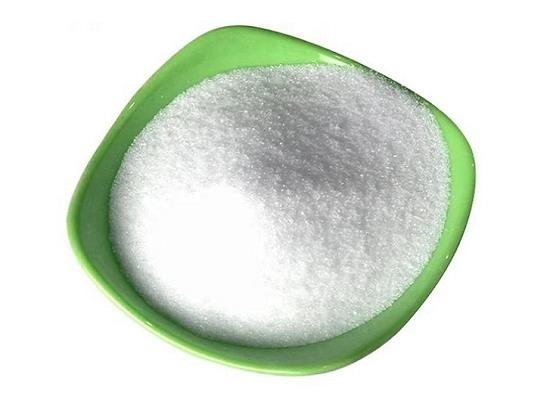Innovative Uses and Eco-Friendly Production of D-Tartaric Acid in Sensor Technology and Bioengineering
Jul 16,2024
General Description
D-Tartaric acid plays a significant role in enhancing sensor performance, particularly in biosensors for detecting pathogens like Vibrio parahaemolyticus. By doping polymers with D-Tartaric acid, researchers have achieved faster template removal, improved affinity, and increased sensitivity, leading to efficient and rapid pathogen detection. These advancements have practical implications in food safety and environmental monitoring, with D-Tartaric acid-doped sensors offering high selectivity, good repeatability, and reliable performance in detecting pathogens in various matrices. Additionally, biological synthesis of D-Tartaric acid using a specific bacterial strain showcases eco-friendly production methods with confirmed purity and stereochemical configuration, highlighting the potential for sustainable production techniques.

Figure 1. D-Tartaric acid
Applications
Enhancing Sensor Performance with D-Tartaric Acid Doping
D-Tartaric acid plays a crucial role in improving the performance of biosensors designed for detecting pathogens such as Vibrio parahaemolyticus. In these applications, the main challenge lies in the complete removal of the template bacteria from the sensor's polymer matrix, achieving high affinity, and ensuring sensitive detection. D-Tartaric acid is utilized as a dopant to modify the chemical properties and morphology of bacteria-imprinted polymers. By introducing D-Tartaric acid into the polymer structure, researchers have successfully accelerated the process of template removal, taking only about 1.5 hours, which is significantly faster than traditional methods. This enhancement is vital as it directly influences the sensor's efficiency and response time, making D-Tartaric acid a valuable component in sensor technology development.
Improvements in Affinity and Sensitivity of Imprinted Polymers
The application of D-Tartaric acid in the construction of bacteria-imprinted polymers has shown remarkable improvements in the affinity and sensitivity of the sensors. By doping polymers with D-Tartaric acid, the binding sites within the polymer become more effective at recognizing specific bacteria, notably Vibrio parahaemolyticus. This increased affinity is evidenced by a recognition time of only 30 minutes. Additionally, D-Tartaric acid enhances the sensitivity of the sensors, with a detection limit improved to 19 CFU mL-1. These advancements are critical for applications in food safety and environmental monitoring, where rapid and accurate detection of pathogens is paramount.
Application in Food Safety and Environmental Monitoring
The use of D-Tartaric acid-doped sensors holds significant potential in securing food safety and monitoring environmental samples. The sensors demonstrate high selectivity and good repeatability, with a linear detection range of 102 to 106 CFU mL-1. Such features make D-Tartaric acid-doped sensors highly effective for practical applications, particularly in testing drinking water and oyster samples. The recovery rates in these matrices ranged from 94.8% to 105.3%, indicating high reliability and accuracy of the sensor performance. The integration of D-Tartaric acid into sensor development not only enhances the functionality but also opens new avenues for creating highly efficient and reliable tools for public health protection and food safety assurance. 1
Biological Synthesis
Isolation and Identification of Bacteria for D-Tartaric Acid Synthesis
A significant advancement in the biological synthesis of D-Tartaric acid involves the isolation of a specific bacterial strain, identified as strain 1-3, which possesses the ability to transform cis-epoxysuccinic acid into D-Tartaric acid. This strain was isolated from soil samples and showed unique capabilities in the enantioselective hydrolysis process essential for producing D-Tartaric acid. Through extensive testing, including phenotypic characterization and Biolog GN analysis, strain 1-3 was classified within the Bordetella genus. The ability of this bacterium to utilize cis-epoxysuccinic acid not only as a carbon source but also as an inducer for the enzyme cis-epoxysuccinic acid hydrolase highlights a critical step in the biosynthetic pathway that leads to the production of D-Tartaric acid.
Characterization and Confirmation of Biologically Produced D-Tartaric Acid
Following the successful biotransformation process by strain 1-3, the product underwent purification to yield a colorless and scentless crystalline form of D-Tartaric acid. This biologically synthesized D-Tartaric acid was thoroughly characterized to confirm its identity and purity. Techniques such as proton nuclear magnetic resonance ((1)H NMR) spectroscopy and optical rotation analysis were employed, confirming that the crystal was indeed D-Tartaric acid with a laevorotatory optical rotation. These methods provide a reliable confirmation of the stereochemical configuration of D-Tartaric acid, essential for applications requiring specific enantiomers of tartaric acid. This bioproduction method not only emphasizes the role of microbial pathways in producing valuable chemical compounds but also enhances the potential for developing eco-friendly and efficient production techniques for D-Tartaric acid. 2
Reference
1. Jia X, Liu J, Zhang Y, Jiang X, Zhang J, Wu J. D-tartaric acid doping improves the performance of whole-cell bacteria imprinted polymer for sensing Vibrio parahaemolyticus. Anal Chim Acta. 2023; 1275: 341567.
2. Li X, Ma X, Zhao Y, et al. Isolation and characterization of a new bacterium capable of biotransforming cis -epoxysuccinic acid to D(-) -tartaric acid. FEMS Microbiol Lett. 2007; 267(2): 214-220.
- Related articles
- Related Qustion
Thioanisole facilitates targeted electrophilic substitutions, pivotal in pharmaceuticals and materials; its photodissociation research enhances photochemistry and materials science insights.....
Jul 16,2024APIp-Tolualdehyde facilitates hydrazine quantification via HPLC-MS/MS, synthesized efficiently from p-xylene with high selectivity and dual production benefits, enhancing economic viability.....
Jul 16,2024APID-(-)-Tartaric Acid
147-71-7You may like
D-(-)-Tartaric Acid manufacturers
- D-Tartaric acid
-

- $6.00 / 1kg
- 2024-07-16
- CAS:147-71-7
- Min. Order: 1kg
- Purity: 99%
- Supply Ability: 300tons
- D-Tartaric acid
-

- $14.00 / 10kg
- 2024-07-16
- CAS:147-71-7
- Min. Order: 10kg
- Purity: 99.99%
- Supply Ability: 100Tons
- D-Tartaric acid
-

- $0.00 / 25KG
- 2024-07-16
- CAS:147-71-7
- Min. Order: 1KG
- Purity: 99%
- Supply Ability: 1000mt/year




